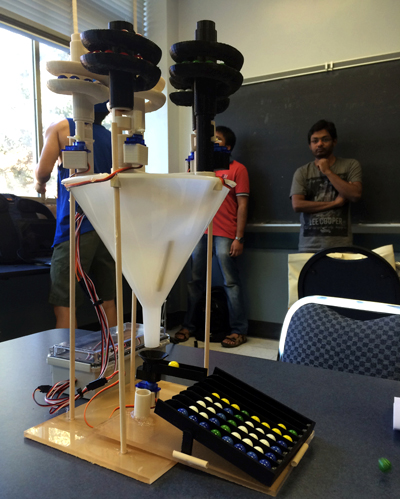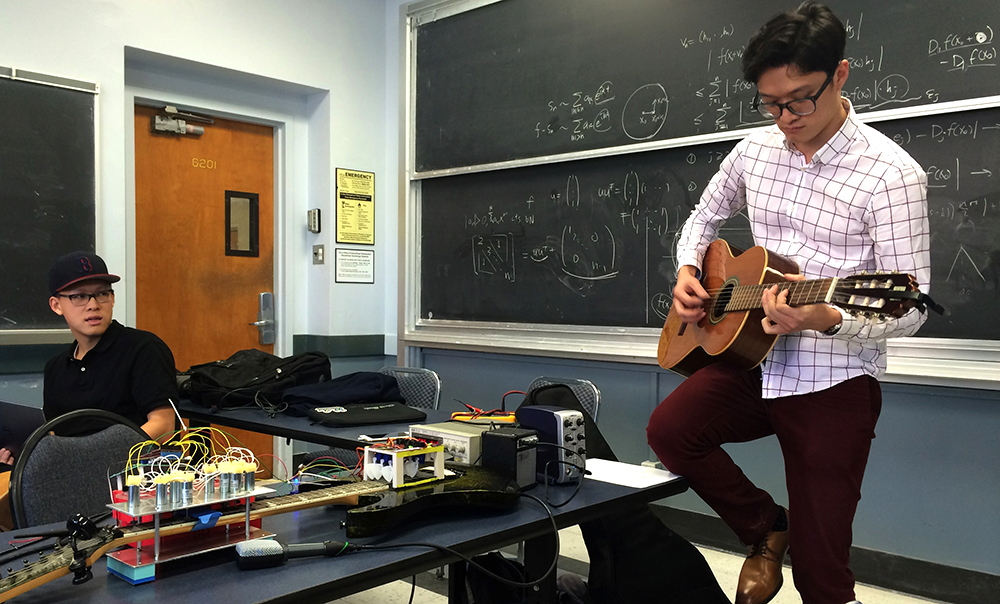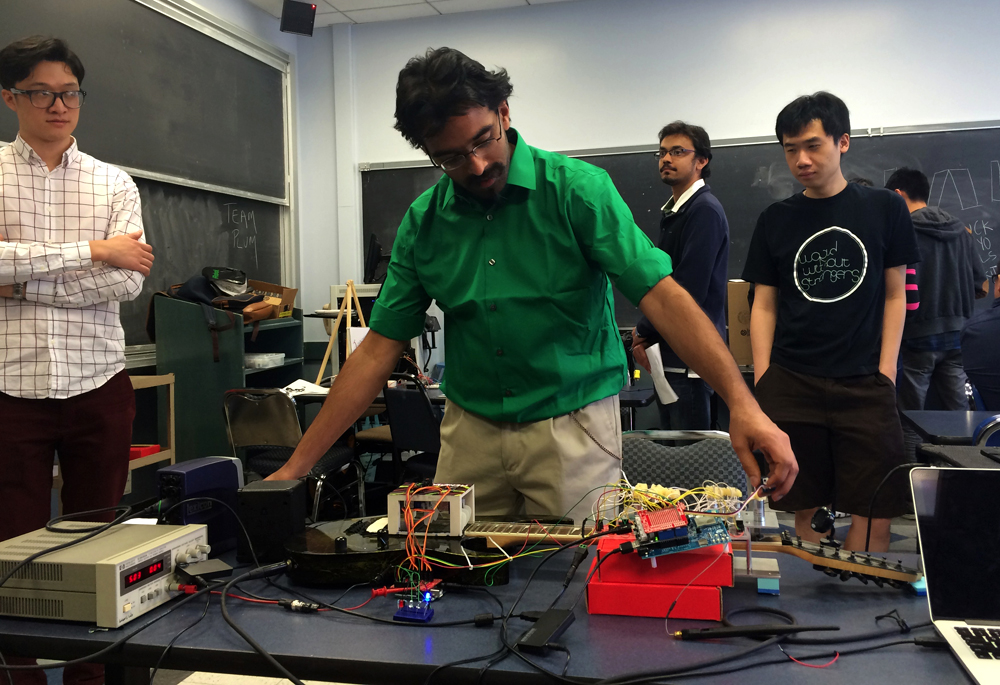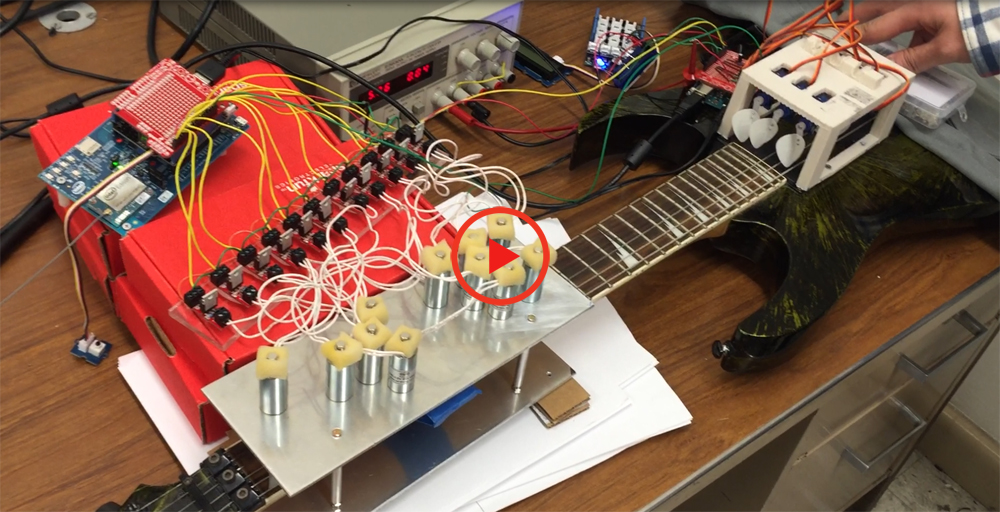
How do we develop the tools necessary to get to a future where physical devices — robots and electro-mechanical machines that interact with the real world — are as pervasive and prevalent as computation today?
— Ankur Mehta
In a small and packed classroom on St. Patrick’s Day, the resounding intro to AC/DC’s You Shook Me All Night Long emerged from the boisterous voice of 30 graduate electrical engineering students talking to each other. Everyone’s attention was drawn to the source of the tune — the center of the classroom where an electric guitar lay innocently on a table, a foot away from the nearest human.
Josh Rooks, a first-year graduate student, is a co-designer of the automated electric guitar.
“This is the left hand,” Rooks explained by pointing to a box attached to the fretboard that has finger-like mechanics. “It presses down on the string and plays chords.”

Further down the neck of the guitar, a set of plastic picks were strumming the string, the vibrations of which were transmitted to an amplifier, playing the song. Rooks said the automated electric guitar can not only play pre-programmed songs, but can also learn new sheets of music from the internet when asked by a person using the Google voice recognition system.
Rooks’ player-free electric guitar is one of the many class projects presented during the finals week for a robotics design course taught by Assistant Professor Ankur Mehta, a new faculty member of the Electrical Engineering department.
“I got into this field because I really like robots. I want everyone to be able to design, create, and use them, just the same way as I can,” Mehta said. “I enjoy being in a position where I can influence students to pursue robotics.”
According to Mehta, many robotics professors would focus on some subset of the field that is more relevant to their research interest when designing a course. However, because of a wide range of background in mechanical engineering, electrical engineering, computer science and physics, Mehta said he chose to see robotic design at a much more interdisciplinary level.
“Being able to talk to the professor about what the different components are, how to actually analyze the system, how to model it really contributed to our project,” said second-year Andrew Kotite who presented his marble image generator at the final showcase. “We could’ve probably done it without the course, but it would for sure taken a lot longer and a lot more effort. And it might not turned out as well.”
An undergraduate version of the course will be offered by Mehta next year to introduce more aspiring young engineers into the field of robotics.
Mehta’s vision of empowering people with access to robotic design does not just stop there in the classroom at UCLA. His research aims to democratize robot creation to everyday people with potentially limited experience in engineering, labeling his ambition as “printable robotics”.
“The term ‘printable robotics’ draws parallels to 3D printers,” Mehta explained. “3D printers give you this notion of being able to create anything anywhere by anyone. It’s rapid prototyping for mechanical structures.”

Mehta said he wants to achieve rapid design and fabrication of robotic systems, in the same way as 3D printing. Today, it can take months or even years for a team of engineers from different disciplines to create a robot.
“This idea of printable robots is how to get that process down to something that’s achievable by a single person without expensive design tools, without sophisticated manufacturing tools, without extensive amount of experience, money, and time,” Mehta said.
Mehta described his vision of a future filled with printable robots by drawing a parallel to the apps in our smartphones today.
“Any time we have a problem, there’s an app for that. I want that same paradigm to apply to the physical world. So any time we have a physical task that we need solved, we should have a robot for that,” Mehta said. “If one doesn’t exists on the market, you can just go ahead and design and create your own robotic solution with minimal engineering experience.”


